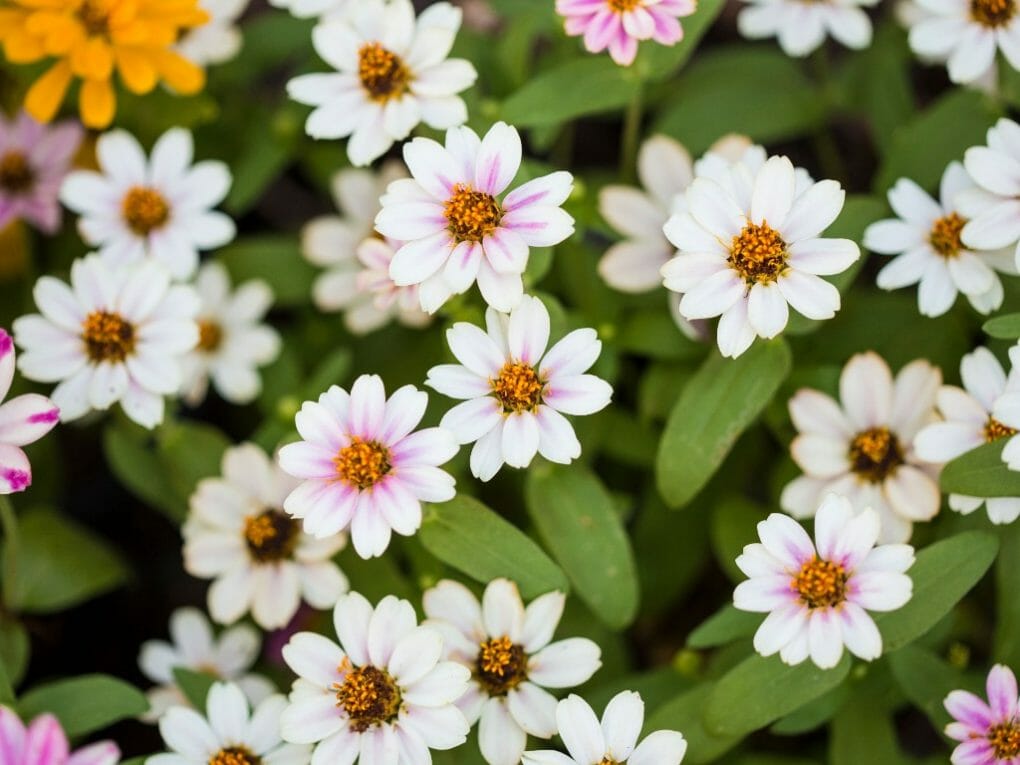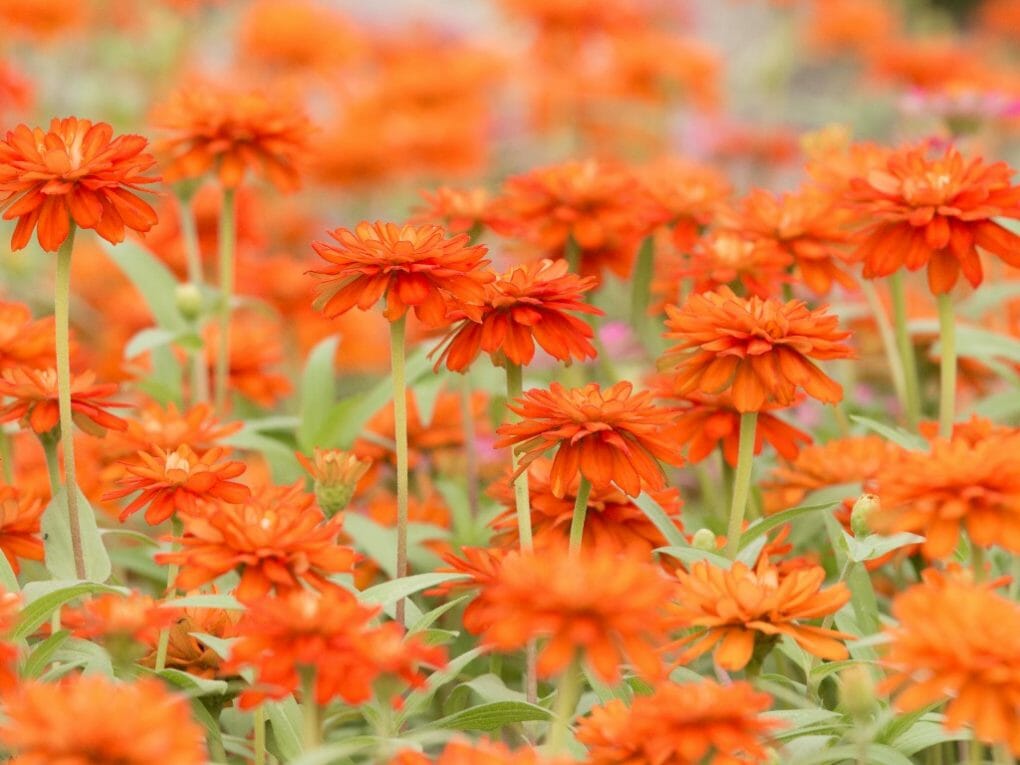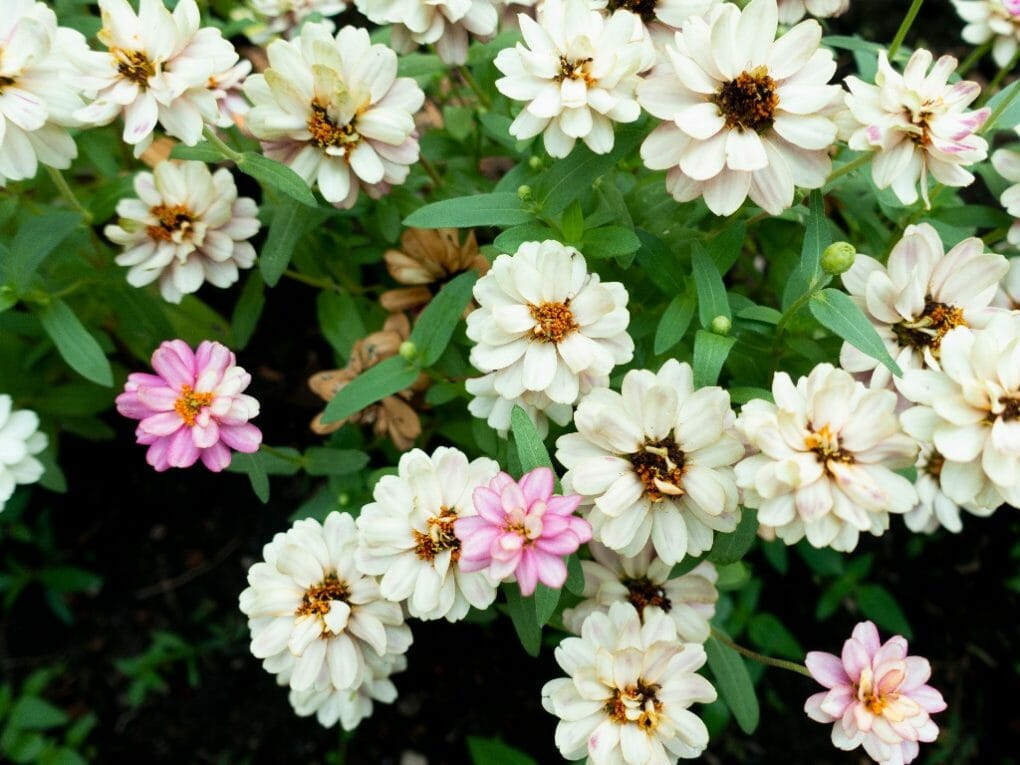Zinnia Germination Time | Knowing When Zinnias Start to Sprout

Zinnias are easy to grow and will reward you with showy flowers in a short amount of time. Typical zinnias start to germinate within 7-10 days. Some begin sprouting 3 days as the shortest and 24 days as the longest. Depending on the type, it takes about two months after planting for the first flowers to show up. When temperatures are lower, seeds will take longer to sprout. You can bring zinnia stems inside to enjoy from the middle of summer until the end of the season. Cutting plants seems to make them grow stronger and cause them to make more flowers. Powdery mildew usually shows up on the leaves in late summer. Try not to water from above to stop mildew.
Table of Contents
How Long Do Zinnias Take To Bloom After Germination?
The Zinnia elegans species gives rise to the large-flowered zinnias, which bloom 45 to 60 days after being planted. If the weather is warm, you can have flowers in less than two months after you plant the seeds. Ironically, it can take up to 12 weeks for the smaller zinnia species (Zinnia angustifolia, etc.) to bloom from seed. Cooler spring temperatures can slow down the first flowers, but when it warms up, they catch up quickly.
Blooming zinnias (Zinnia spp.) fill gardens with a sea of nonstop color from summer to fall, sparkling in every color but blue. You won’t have to wait an eternity for the cheerful blooms of zinnias to appear on the scene, despite being one of the easiest annual flowers to grow from seed.
Depending on the plant type, they can be anywhere from 12 inches to 48 inches tall and 8 to 24 inches apart. If you want to know more about how your seeds will grow, like how tall they will get and how far apart they will be, you should always look at the seed packet. You can read this information on the back of every seed Needs packet. Once the plants are established, they will bring lots of good bugs to the garden because they will flower all summer. Zinnias are beautiful cut flowers used in many arrangements and bouquets. Once your Zinnias bloom, you can start cutting off the spent blooms to make room for new ones. Again, because Zinnias are annuals, they won’t come back the next year unless their seeds land on bare ground. If you want to save seeds for next year’s growing season, you should let the flower heads dry out.
What Do Zinnia Sprouts Look Like?

The leaves of zinnia sprouts are oval and green. At first, the cotyledons of the zinnia seedlings may still have the seed coat on them. The leaves of zinnia seedlings are a little pointy and have thin lines.
Most stems are green, but some can be purple.
If you’re worried about your zinnia seedlings because their leaves are turning brown or crispy, put them in the shade or put something over them if you can. You might also have to give them water!
Growing Zinnias From Seeds
Direct Sowing in the Garden
- Plant seeds directly in average soil in full sun after there is no longer any chance of frost.
- Remove any weeds from the soil and work organic matter into the top 6 to 8 inches. Then, level and smooth the soil.
- Most plants do well when organic matter is added to the soil. Compost is an excellent form of organic matter that contains the ideal ratio of nutrients and pH. It can be added at any time to your planting space. If you can’t find compost, add 1 to 2 inches of organic mulch on top of the soil after planting. This will start to break down into compost. After the growing season, a soil test will show what changes need to be made to the soil for the next season.
- Spread the seeds 12 inches apart and cover them with a quarter-inch of fine soil.
- Lightly firm the soil with your hand, water it, and make sure it stays evenly wet.
- Seedlings will emerge in 7-10 days.
- When the seedlings are about 1 to 2 inches tall, spread them out, so they are 8-24 inches apart, depending on the type.
Sowing Seed Indoors
- Plant seeds in a greenhouse or other indoor location. Using a seed-starting kit two-three months before the outdoor planting date in the spring.
- In the standard method of seed starting, seeds are planted at 14 inches.
- Maintain a soil temperature of 70-75°F (21-24°C) and a constant moisture level.
- In 7-10 days, the seedlings will emerge.
- If you don’t have a sunny windowsill, give your seedlings plenty of light by placing them 3-4 inches beneath plant lights that are on for 16 hours a day and off for 8 hours a night as soon as they emerge. As the plants get bigger, you should raise the lighting. In this scenario, the high temperatures produced by incandescent bulbs would be disastrous. Don’t keep lights on for 24 hours. Most plants need a dark period to thrive.
- When the seedlings have two sets of leaves, you can thin them out to a single plant per cell.
- At the three- to four-week mark, give the seedlings a starting solution once every three to four weeks, or as often as recommended by the manufacturer.
- After the first frost, you can put your hardened-off seedlings in the garden.
- The term “hardening off” refers to gradually exposing seedlings to outdoor conditions before they are planted in the garden. To help your seedlings adjust to outdoor conditions, move them to a sheltered outdoor area for a week. It’s important to first shield them from the cold wind and hot sun. Do not leave containers outside overnight if frost is predicted; cover or bring them inside instead. Transplant shock and scalding are mitigated through this hardening process, strengthening the plant’s cellular structure.

Care Tips for Zinnia Seedlings
- Make sure to water your zinnia sprouts and let them slowly get used to the sun outside. As they grow, you’ll soon be able to pick flowers and put them in a vase to enjoy inside if you want to.
- Because they are young and more fragile than fully grown zinnias, you should check on your zinnia seedlings often to see if they need water or show signs of stress or other problems.
- Keep some space between each zinnia seedling. In the end, you should leave 12 to 18 inches between each plant.
- Zinnias can get powdery mildew, but putting plants far enough apart can help stop that. If you sow the seeds too close together when you start, you can try to move them as they grow.
